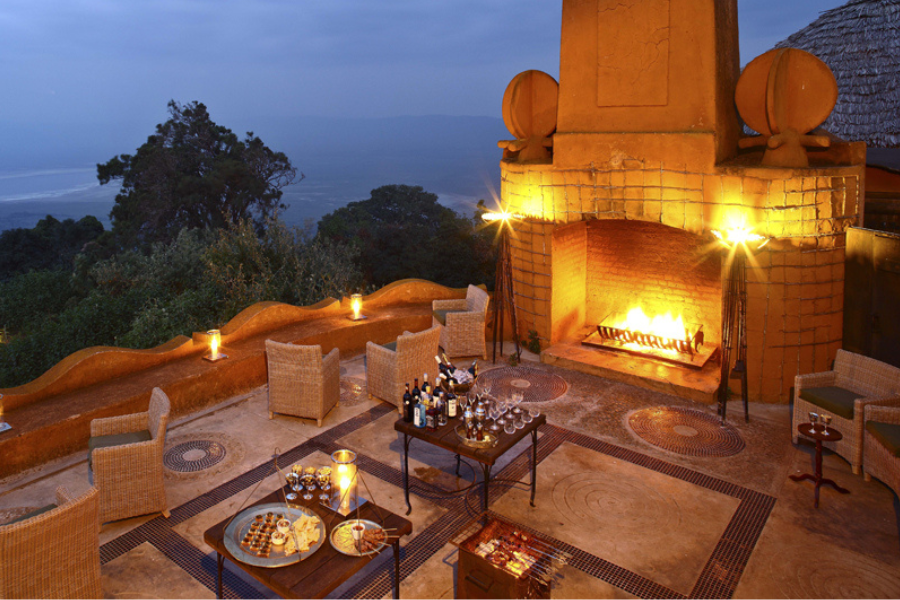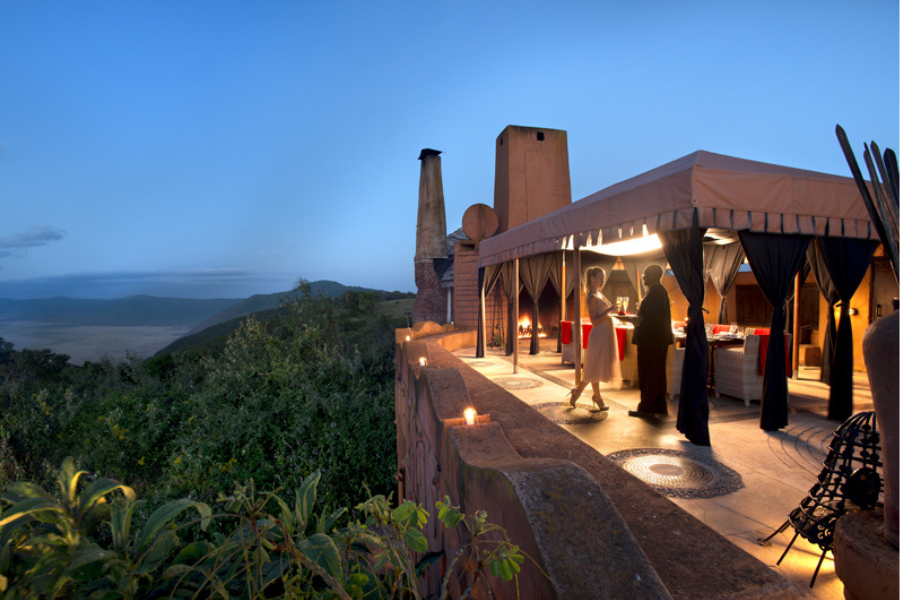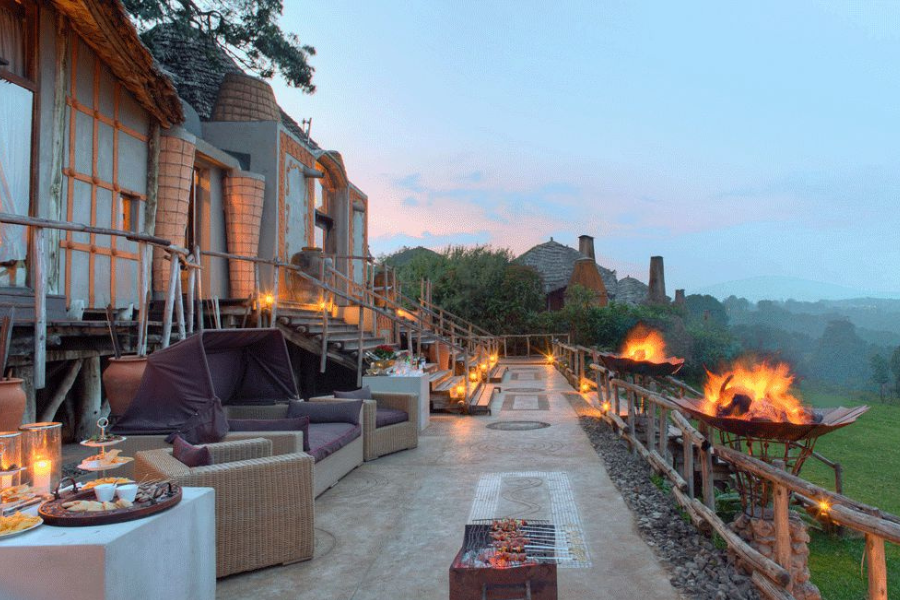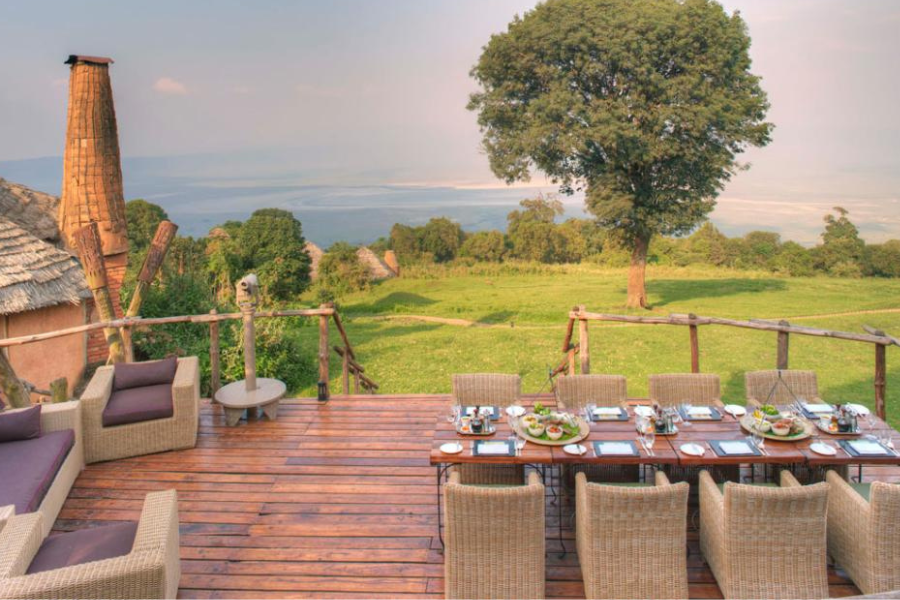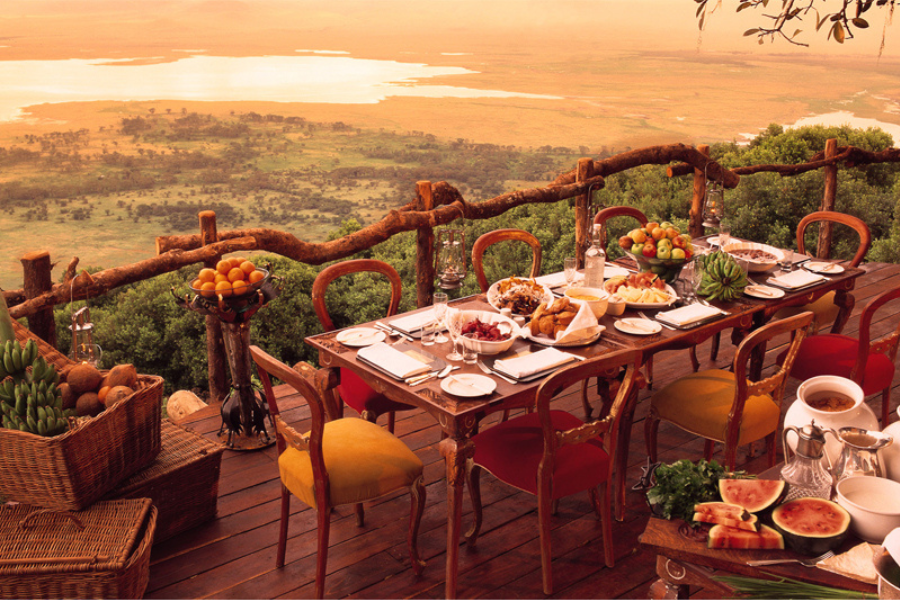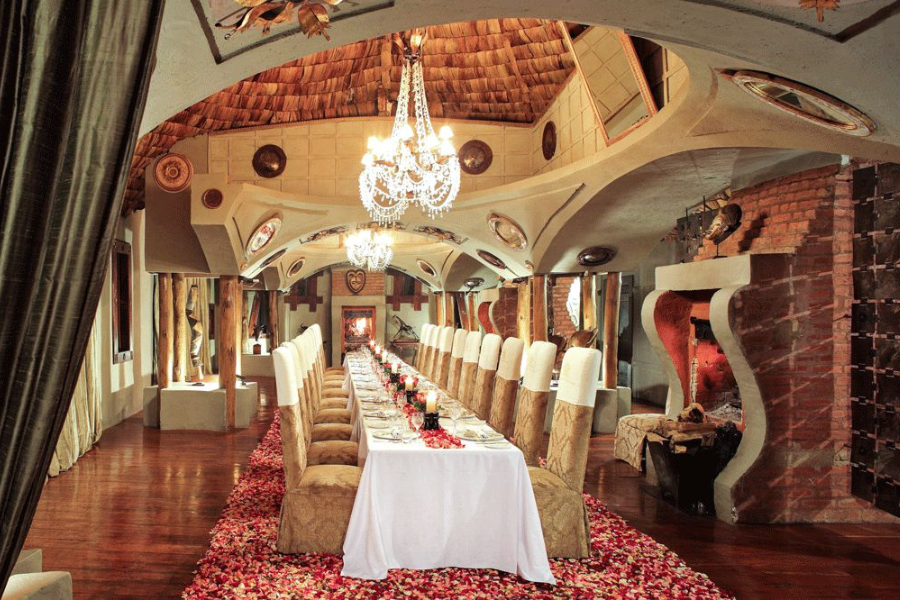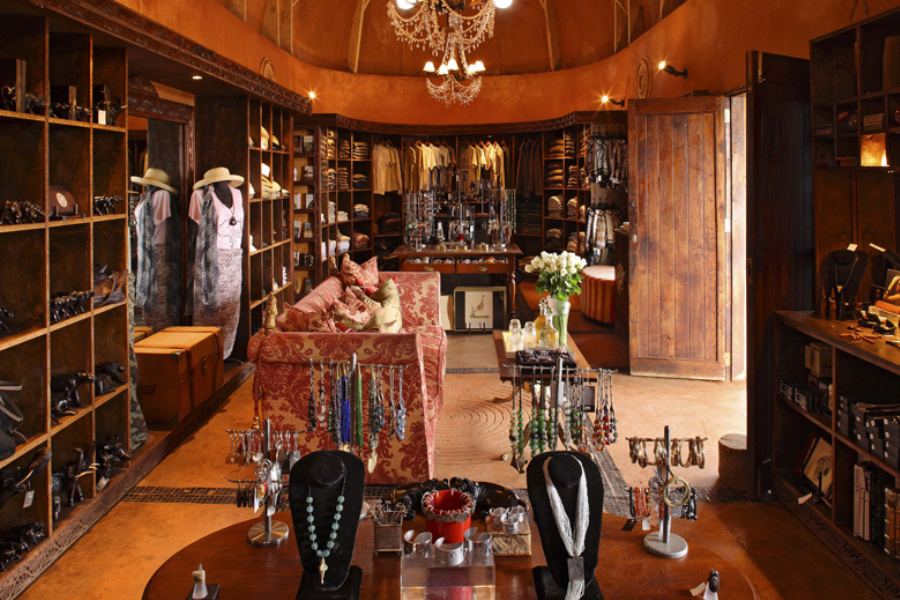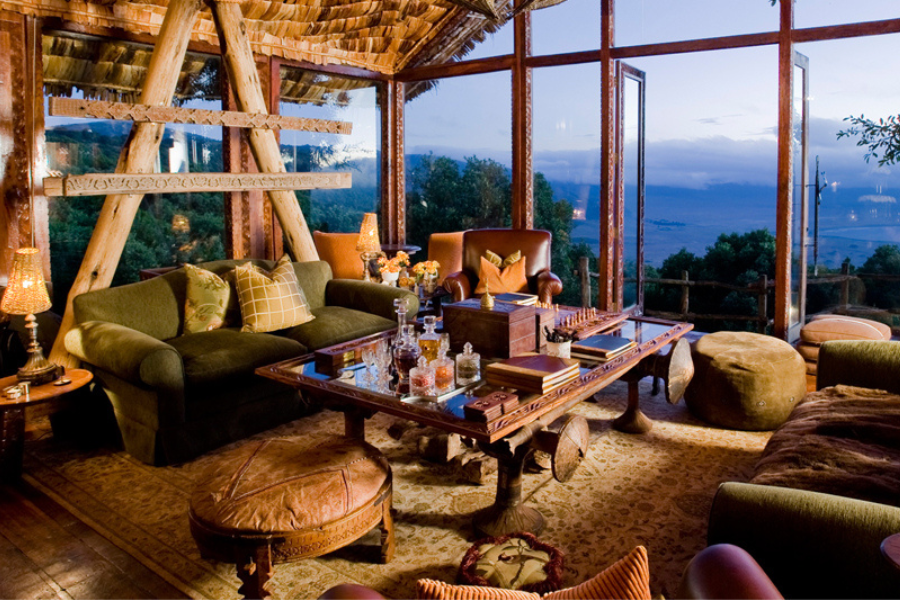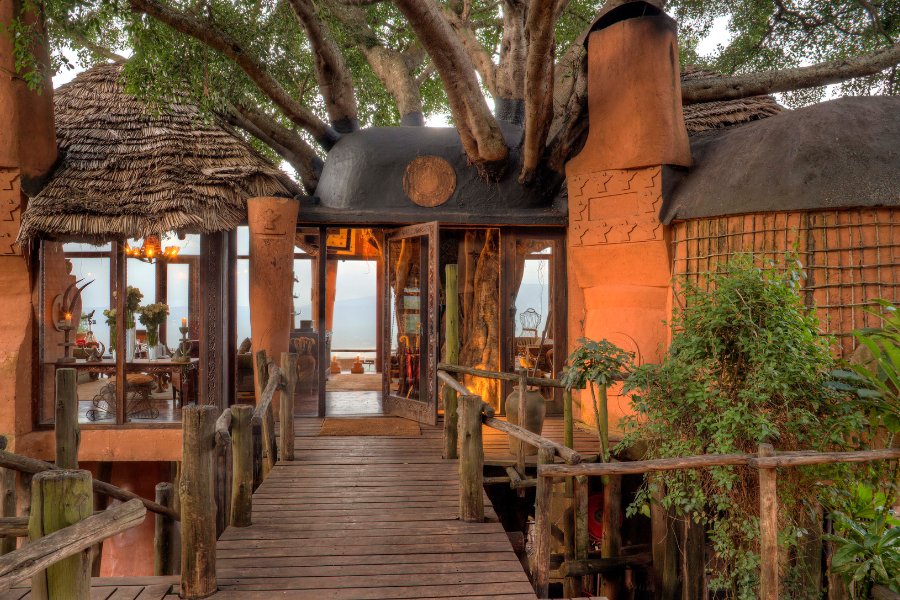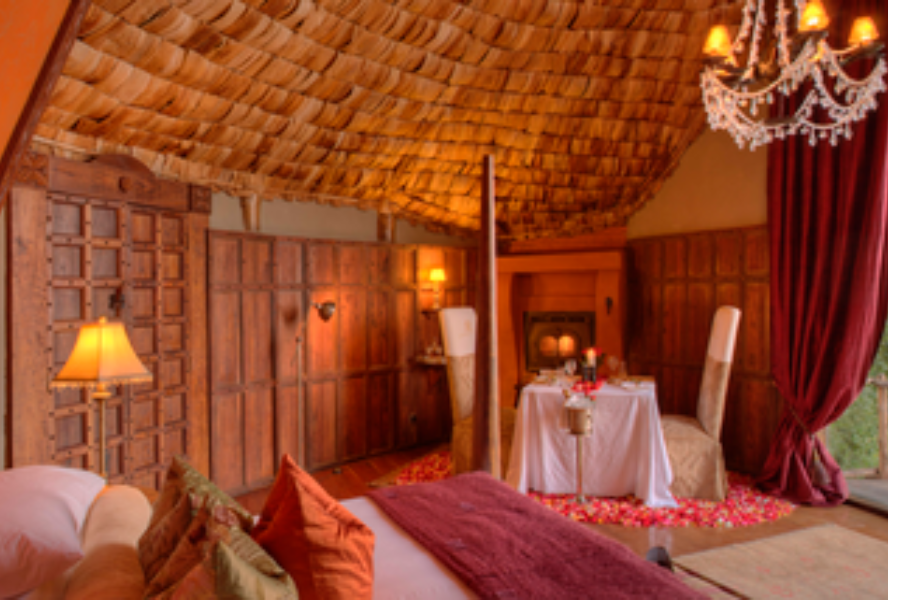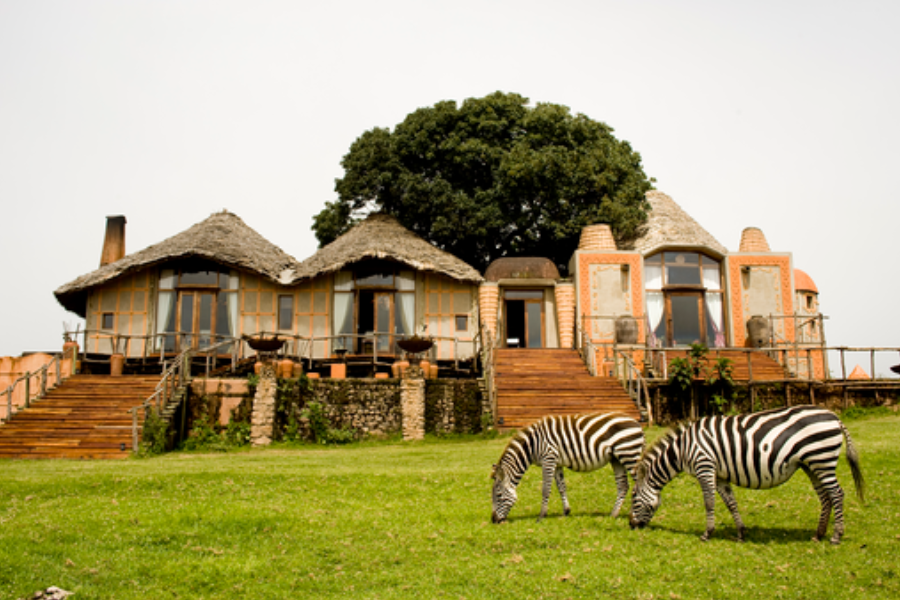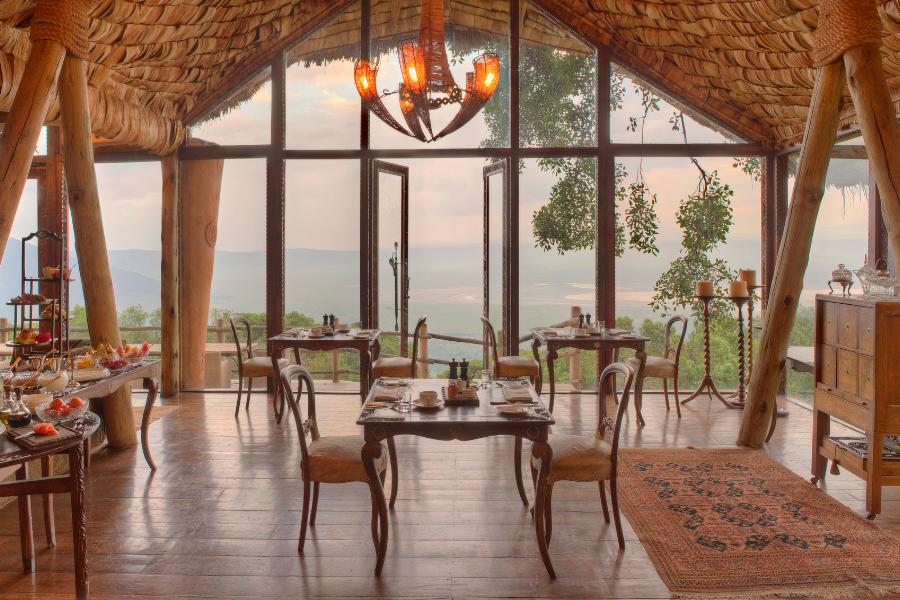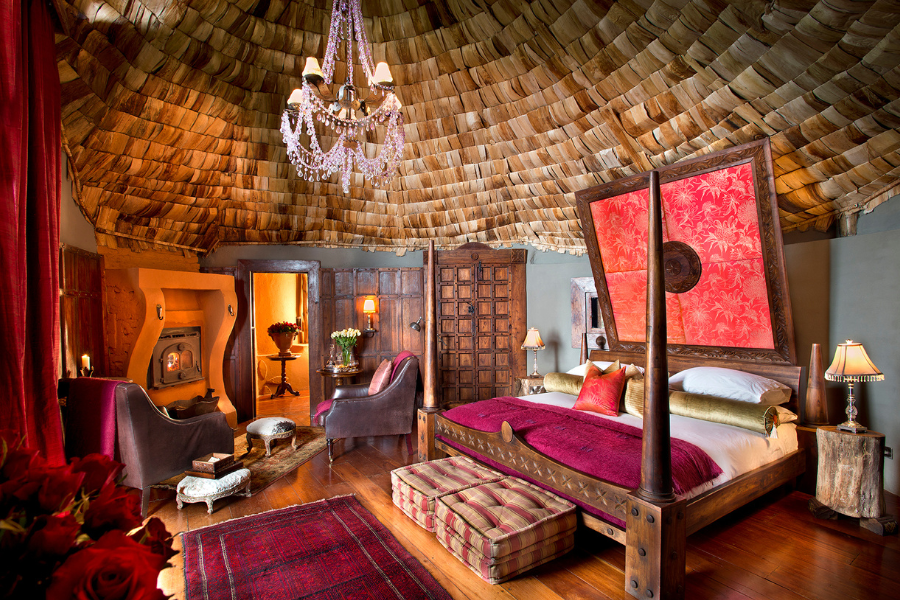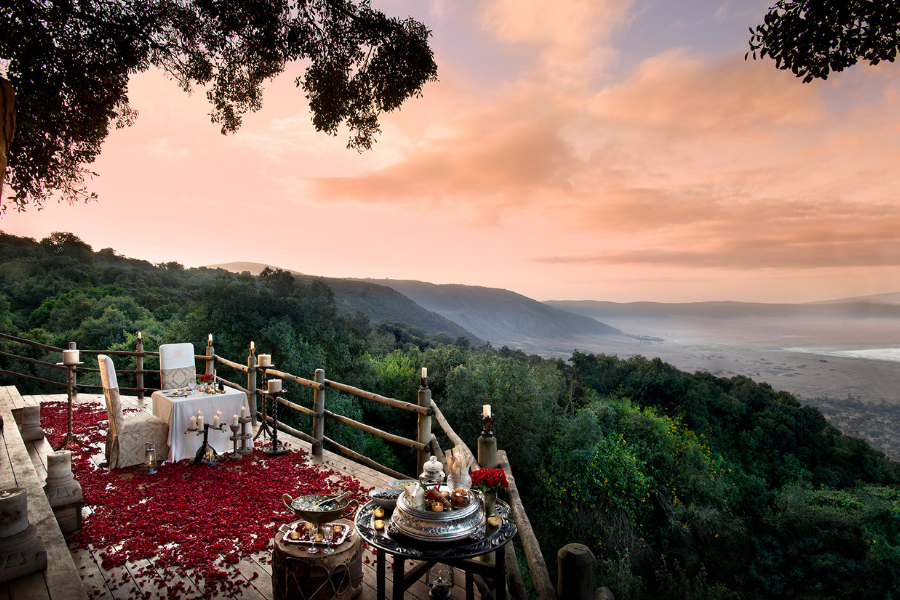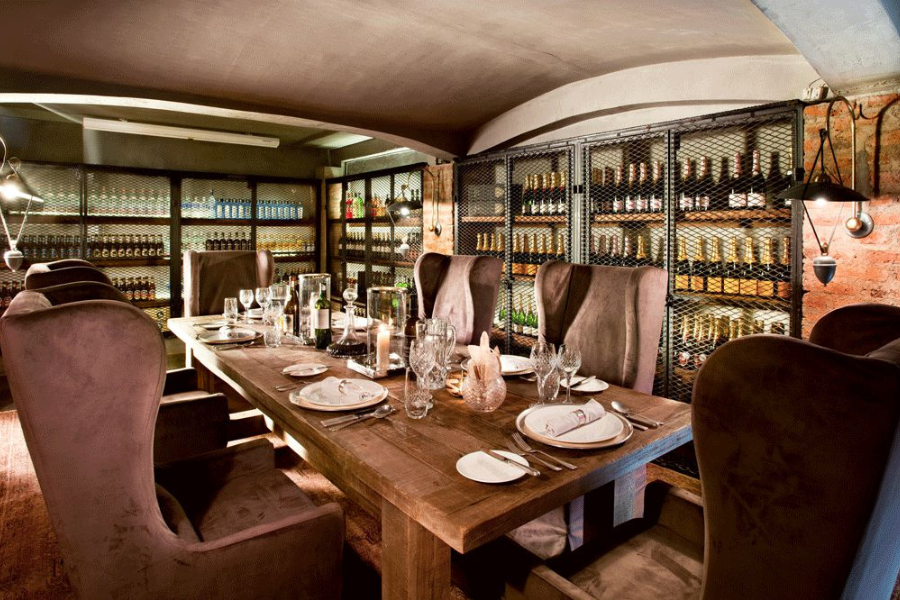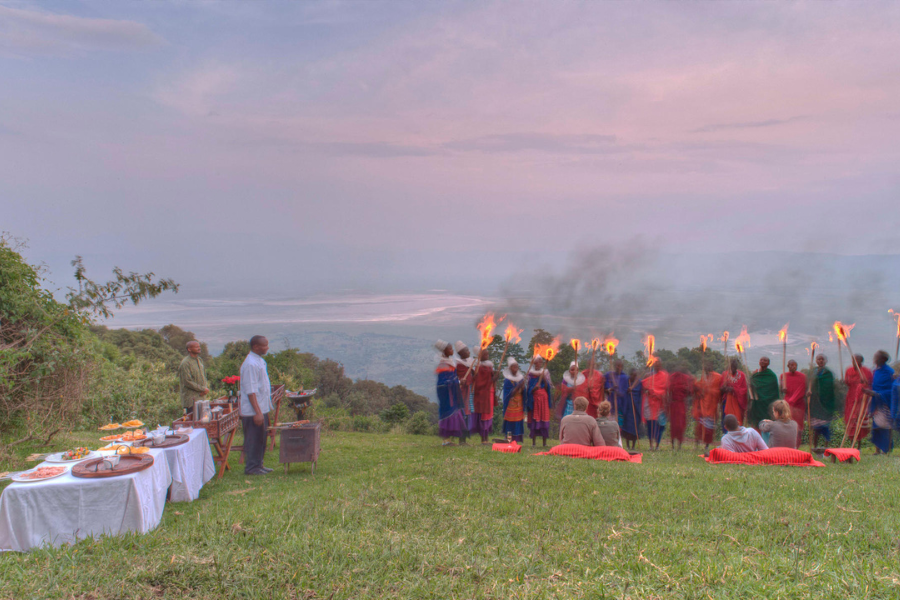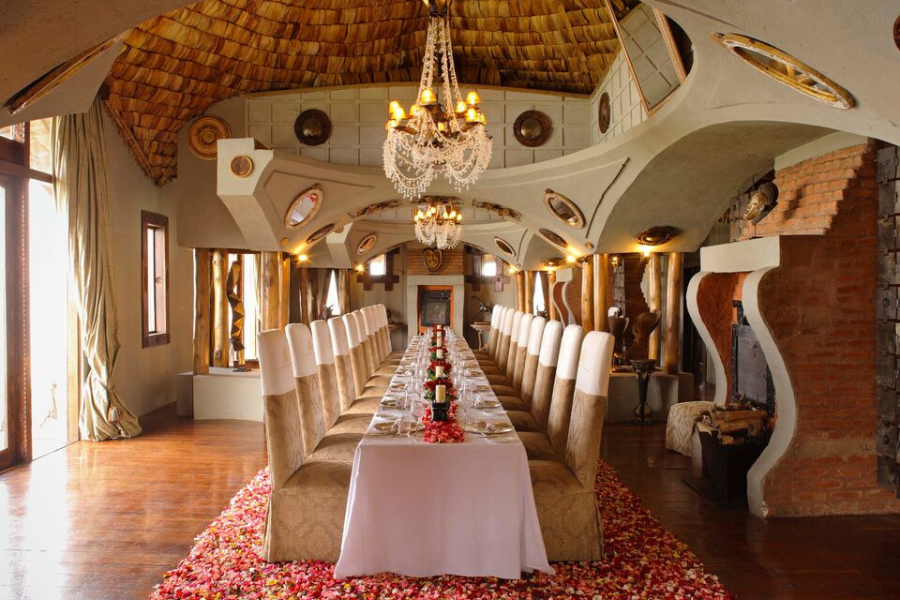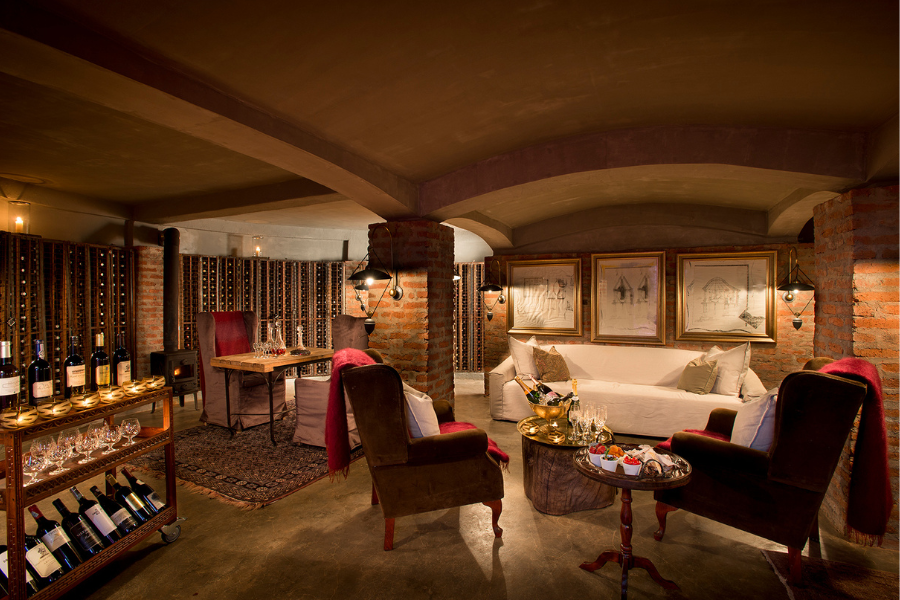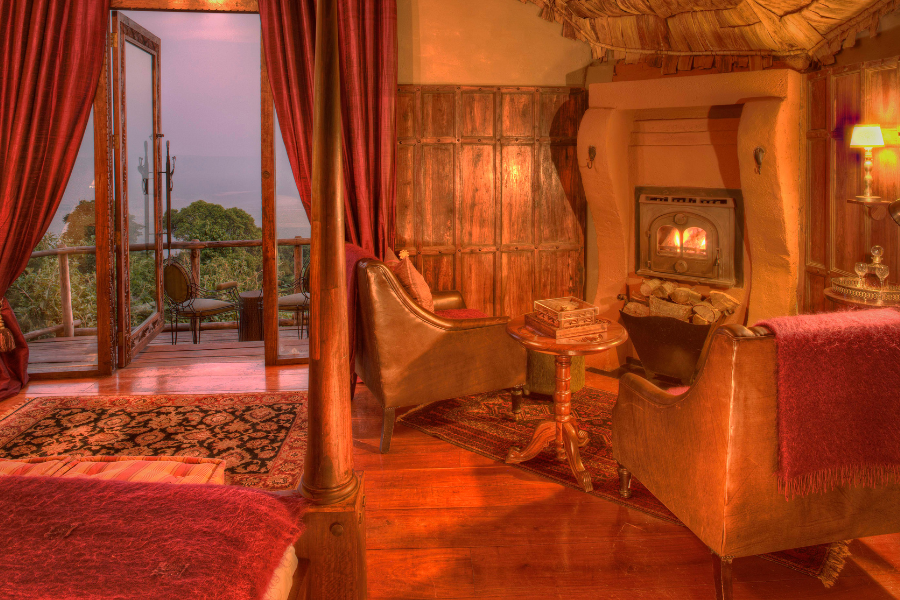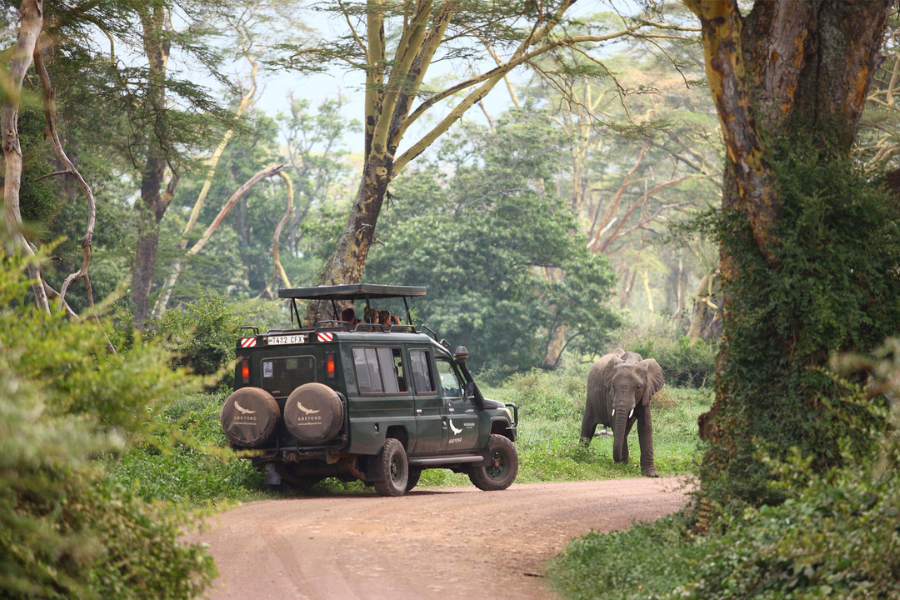Availability
The rates are Full Inclusive.They cover Accomodation, All Meals,All Drinks,Local Brand Spirits,Safari Activities,Emergency Evacuation and Transfer between Lodge Airstrip and The Lodge.
You can request for Full board Rates if you dont wish to include Safari Activities and Transfers.
-
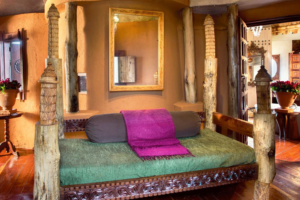
AndBeyond Ngorongoro Crater Lodge Family suite
+ more infoTwo suites are conveniently interlinked via a closed walkway, which allows access between the suites, while maintaining complete privacy. The family suite can accommodate two adults and two children (three children can be provided for on special request).
Max: Room facilities:Air Condition, Balcony, Bars, Butler service, Cable TV, Exchange office, Fitness, Free parking, Free toiletries, Hair dryer, Heating, Indoor pool, Minibar, Private bathroom, Private entrance, Restaurants, Safety deposit box, Spacious wardrobe, Telephone, TV, Wake up service, Washer & Dryer, Wellness, Wheelchair accessible, Wireless internet
Bed size:1.One King Size Bed 2.Two Twin beds
Room size:84 SQM
-
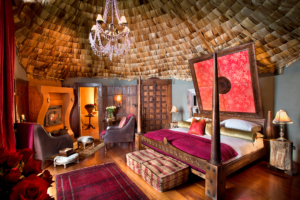
AndBeyond Ngorongoro Crater Lodge Luxury suite
+ more infoSteeped in romance, each stilted, handcrafted mud and thatch suite is adorned with graceful antiques, grand chandeliers and elegant African treasures. The bedroom, sitting room and ensuite bathroom boast floor-to-ceiling glass windows overlooking the magnificent Crater below.
Max: Room facilities:Air Condition, Balcony, Bars, Beauty salon, Butler service, Fitness, Free parking, Free toiletries, Hair dryer, Heating, Minibar, Private bathroom, Private entrance, Restaurants, Safety deposit box, Spacious wardrobe, Telephone, TV, Wake up service, Washer & Dryer, Wellness, Wheelchair accessible, Wireless internet
Bed size:1.One King Size
Room size:36m2
We are sorry, this accommodation is not available to book at the moment
AndBeyond Ngorongoro Crater Lodge
Steeped in romance, each stilted, handcrafted banana thatch suite at andBeyond Ngorongoro Crater Lodge is adorned with graceful antiques and unforgettable opulence. Ensuite bathrooms, with a centerpiece of fresh roses, feature huge showers and chandelier-lit bathtubs, while floor-to-ceiling windows ensure breathtaking views from all around.
Perched above cool, swirling mists on the edge of the Ngorongoro Crater, the lavish safari suites at &Beyond Ngorongoro Crater Lodge offer breathtaking views. Frequently described as Maasai meets Versailles, each camp has its own guest sitting and dining areas, as well as viewing decks. Lodge experiences at Ngorongoro Crater, the world’s largest intact caldera, are designed to ensure you soak up the spectacular views. Watch the sunset to the chant of the Maasai, swathed in bright red shukas (traditional fabric), or soak in your bathtub looking out onto a magical landscape. Perfect place to experience the thrilling, exhilarating, and memorable safari that is the heartbeat of Tanzania’s diverse landscape.
Cancellation / Prepayment
Cancellation before 60 days-50% refundable
Cancellation before 30 days -25% refundable
Cancellation within below 30days-No refund.
Children and extra beds
Children up to 0-6 12 years are allowed free.
Maximum 6-16 years,50% rate applies
Pets
Pets not Allowed
Accepted credit cards
Only Mastercard and Visa
Check-in time
14:00hrs
Check-out time
10:00 hrs
Facilities
- Air Condition
- Balcony
- Bars
- Beauty salon
- Butler service
- Exchange office
- Fitness
- Free parking
- Free toiletries
- Heating
- Minibar
- Private bathroom
- Private entrance
- Restaurants
- Safety deposit box
- Spacious wardrobe
- Telephone
- TV
- Wake up service
- Washer & Dryer
- Wheelchair accessible
- Wireless internet
Activities
Big 5 Safari
Game Drives
Nature Walks
Bird Watching
Game Viewing
Massages
Fine Dining
Game Walks
Safaris
Internet
Wifi is available
Parking
FREE
Ngorongoro Crater

The area is named after Ngorongoro Crater, a large volcanic caldera within the area. The conservation area is administered by the Ngorongoro Conservation Area Authority, an arm of the Tanzanian government, and its boundaries follow the boundary of the Ngorongoro District in Arusha Region. The western portion of the park abuts the Serengeti National Park (also a UNESCO World Heritage Site), and the area comprising the two parks and Kenya's Maasai Mara game reserve is home to Great Migration, a massive annual migration of millions of wildebeest, zebras, gazelles, and other animals. The conservation area also contains Olduvai Gorge, one of the most important paleoanthropological sites in the world.
The main feature of the Ngorongoro Conservation Authority is the Ngorongoro Crater, the world's largest inactive, intact and unfilled volcanic caldera. The crater, which formed when a large volcano exploded and collapsed on itself two to three million years ago, is 610 metres (2,000 feet) deep and its floor covers 260 square kilometres (100 square miles). Estimates of the height of the original volcano range from 4,500 to 5,800 metres (14,800 to 19,000 feet) high. The crater floor is 1,800 metres (5,900 feet) above sea level. The crater was voted by Seven Natural Wonders as one of the Seven Natural Wonders of Africa in Arusha, Tanzania, in February 2013. The Ngorongoro volcano was active from about 2.45 to 2 million years ago.
Why is Ngorongoro Crater named a Luxury Safari Destination?
Ngorongoro Conservation Area is often considered a luxury safari destination in Africa for several reason including
- Unique Landscape and Wildlife:
The Ngorongoro Crater provides a stunning backdrop for wildlife viewing. The crater's unique ecosystem and the presence of a high concentration of wildlife, including the Big Five, make it an attractive destination for luxury safaris.
- Exclusive Lodges and Camps:
There are several high-end lodges and luxury camps in and around the Ngorongoro Conservation Area that offer exclusive and luxurious accommodations. These establishments often provide top-notch services, gourmet dining, and upscale amenities, creating a more comfortable and indulgent experience for visitors.
- Limited Visitor Numbers:
The Tanzanian authorities restrict the number of vehicles allowed into the Ngorongoro Crater at any given time, which helps maintain a sense of exclusivity and minimizes the impact of tourism on the environment. This limited access enhances the overall experience for those on luxury safaris.
- Private Safari Experiences:
Many luxury safari packages in Ngorongoro offer private game drives, allowing guests to have a more personalized and intimate wildlife viewing experience. This exclusivity contributes to the overall sense of luxury and adventure.
- Expert Guides and Naturalists:
Luxury safari operators often provide highly experienced guides and naturalists who are knowledgeable about the local flora and fauna. These experts enhance the safari experience by providing in-depth information about the wildlife, geology, and ecology of the Ngorongoro Conservation Area.
- Balancing Conservation and Comfort:
Luxury safari lodges in the Ngorongoro region are designed to offer a high level of comfort while still maintaining a commitment to sustainable and eco-friendly practices. Many lodges contribute to local conservation efforts and community development projects.
- Scenic Views:
The Ngorongoro Crater's breathtaking landscapes, including the crater floor and the surrounding highlands, provide a picturesque setting for a luxury safari. The opportunity to enjoy these stunning views adds to the allure of Ngorongoro as a luxury destination.
- Combined Experiences:
Ngorongoro is often included in larger safari itineraries that may also encompass nearby attractions such as the Serengeti National Park, Lake Manyara, and Tarangire National Park. This allows visitors to experience a variety of ecosystems and wildlife habitats during their luxury safari.
Overall, the combination of exclusive accommodations, limited access, expert guides, and the spectacular natural setting contributes to Ngorongoro's reputation as a luxury safari destination, attracting travelers seeking a premium and unforgettable wildlife experience
Sports & nature
Approximately 25,000 large animals, mostly ungulates, live in the crater. Large mammals in the crater include the black rhinoceros (Diceros bicornis michaeli), the local population of which declined from about 108 in 1964-66 to between 11–14 in 1995, the African buffalo or Cape buffalo (Syncerus caffer), and the hippopotamus (Hippopotamus amphibius). There also are many other ungulates: the blue wildebeest (Connochaetes taurinus) (7,000 estimated in 1994), Grant's zebra (Equus quagga boehmi) (4,000), the eland (Taurotragus oryx), and Grant's (Nanger granti) and Thomson's gazelles (Eudorcas thomsonii) (3,000). Waterbucks (Kobus ellipsiprymnus) occur mainly near Lerai Forest.
Absent are Giraffe, impala (Aepyceros melampus), topi (Damaliscus lunatus), oribi (Ourebia oribi), crocodile (Crocodylus niloticus). Cheetah (Acinonyx jubatus raineyi), East African wild dog (Lycaon pictus lupinus), and African leopard (Panthera pardus pardus) are rarely seen. Spotted hyenas (Crocuta crocuta) have been the subject of a long-term research study in the Ngorongoro Conservation Area since 1996.
Although thought of as "a natural enclosure" for a very wide variety of wildlife, 20 percent or more of the wildebeest and half the zebra populations vacate the crater in the wet season, while Cape buffalo (Syncerus caffer) stay; their highest numbers are during the rainy season.
Since 1986, the crater's wildebeest population has fallen from 14,677 to 7,250 (2003-2005). The numbers of eland and Thomson's gazelle also have declined while the buffalo population has increased greatly, probably due to the long prevention of fire which favors high-fibrous grasses over shorter, less fibrous types. Lake Magadi, a large lake in the southwest of the crater, is often inhabited by thousands of mainly lesser flamingoes. The crater has one of the most dense known population of lions, numbering 62 in 2001.
A side effect of the crater being a natural enclosure is that the lion population is significantly inbred. This is due to the very small amount of new bloodlines that enter the local gene pool, as very few migrating male lions enter the crater from the outside. Those who do enter the crater are often prevented from contributing to the gene pool by the crater's male lions, who expel any outside competitors.
Long-term data imply that lions in the crater were struck by four deadly disease outbreaks between 1962 and 2002 Drought in 1961 and rains throughout the 1962 dry season caused a massive build-up of blood-sucking stable flies (Stomoxys calcitrans) by May 1962. They drained blood and caused painful skin sores that became infected, causing lion numbers to crash from 75-100 to 12. The population recovered to around 100 by 1975 and remained stable until 1983, when a persistent decline began. Numbers have generally remained below 60 animals since 1993, reaching a low of 29 in 1998. In 2001, 34 percent of the lion population died between January and April from a combination of tick-borne disease and canine distemper.
The lion population is also influenced to some extent by the takeover of prides by incoming males, which typically kill small cubs. The biggest influence, however, appears to be disease, particularly canine distemper.
Culture and history info
The name of the crater has an onomatopoeic origin; it was named by the Maasai pastoralists after the sound produced by the cowbell (ngoro ngoro). Based on fossil evidence found at the Olduvai Gorge, various hominid species have occupied the area for 3 million years. Hunter-gatherers were replaced by pastoralists a few thousand years ago. The Mbulu came to the area about 2,000 years ago and were joined by the Datooga around the year 1700. Both groups were driven from the area by the Maasai in the 1800s.
No Europeans are known to have set foot in the Ngorongoro Crater until 1892, when it was visited by Oscar Baumann. Two German brothers (Adolph and Friedrich Siedentopf) farmed in the crater until the outbreak of World War I, after leasing the land from the administration of German East Africa. The brothers regularly organized shooting parties to entertain their German friends. They also attempted to drive the wildebeest herds out of the crater.
In 1921, the first game preservation ordinance was passed, which restricted hunting to permit holders throughout Tanzania. In 1928, hunting was prohibited on all land within the crater rim, except the former Siedentopf farms. The National Park Ordinance of 1948 (implemented in 1951) created the Serengeti National Park (SNP). This, however, caused problems with the Maasai and other tribes, resulting in the Ngorongoro Conservation Area Ordinance (1959) that separated the conservation area from the national park. Maasai pastoralists living in Serengeti National Park were systematically relocated to Ngorongoro, increasing the population of Maasai and livestock living in the Crater. The Ngorongoro Conservation Area Authority was established by the Game Park Laws (miscellaneous amendments) Act, 1976, and owns the majority of Ngorongoro Conservation Area land, including the Crater. The area became a UNESCO World Heritage Site in 1979, originally inscribed for its natural significance. It then received Mixed Heritage Status in 2010. Its cultural recognition stemming from “an exceptionally long sequence of crucial evidence related to human evolution and human-environment dynamics…including physical evidence of the most important benchmarks in human evolutionary development”. This recognition, however, has not included the Maasai community, hence the longstanding conflict surrounding the use and management of the park . The Wildlife Conservation Act of 2009 further restricted human use of Ngorongoro Crater and created a legal framework to politically disenfranchise and forcibly displace traditional pastoralists. The restriction on land use generates tension between the local Maasai communities and conservation authorities. The International Union for Conservation of Nature (IUCN) is seeking solutions to ease conflict and improve collaborative efforts towards conservation with the locals.
The conservation area land is multi-use and unique because it is the only conservation area in Tanzania that protects wildlife while allowing human habitation. Land use is controlled to prevent negative effects on the wildlife population. For example, cultivation is prohibited at all but subsistence levels.
The area is part of the Serengeti ecosystem and, to the northwest, adjoins the SNP and is contiguous with the southern Serengeti plains. These plains also extend to the north into the unprotected Loliondo division and are kept open to wildlife through transhumance pastoralism practiced by the Maasai. The south and west of the area are volcanic highlands, including the famous Ngorongoro Crater and the lesser known Empakaai Crater. The southern and eastern boundaries are approximately defined by the rim of the East African Rift wall, which also prevents animal migration in these directions.
Country name
Tanzania
Read more
We are sorry, there are no reviews yet for this accommodation.



